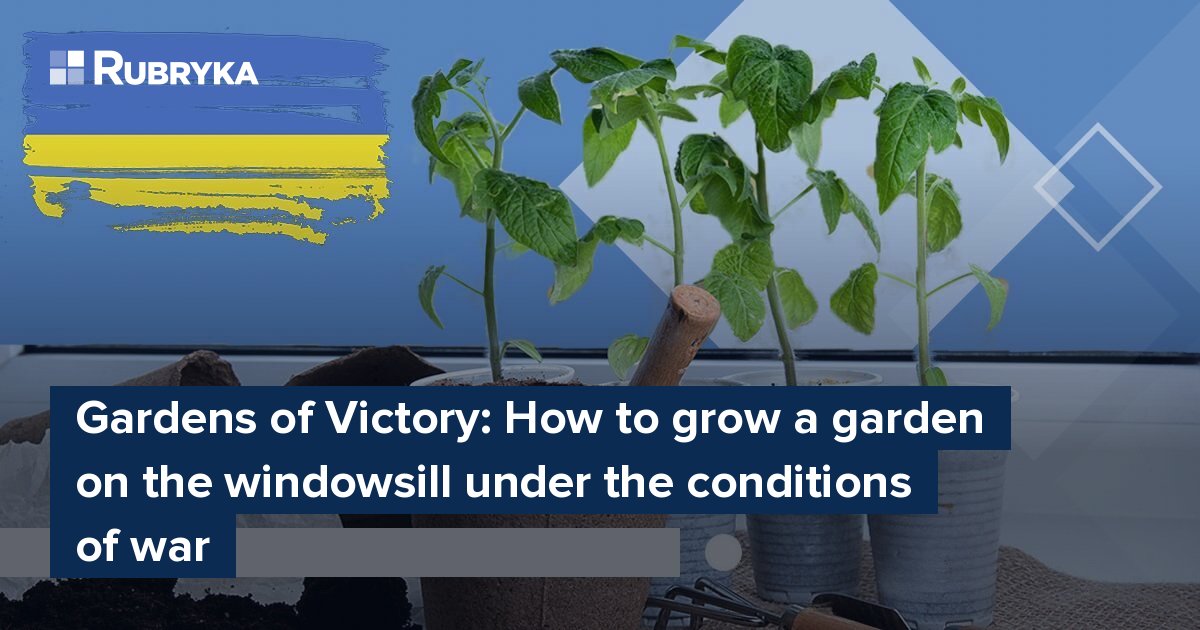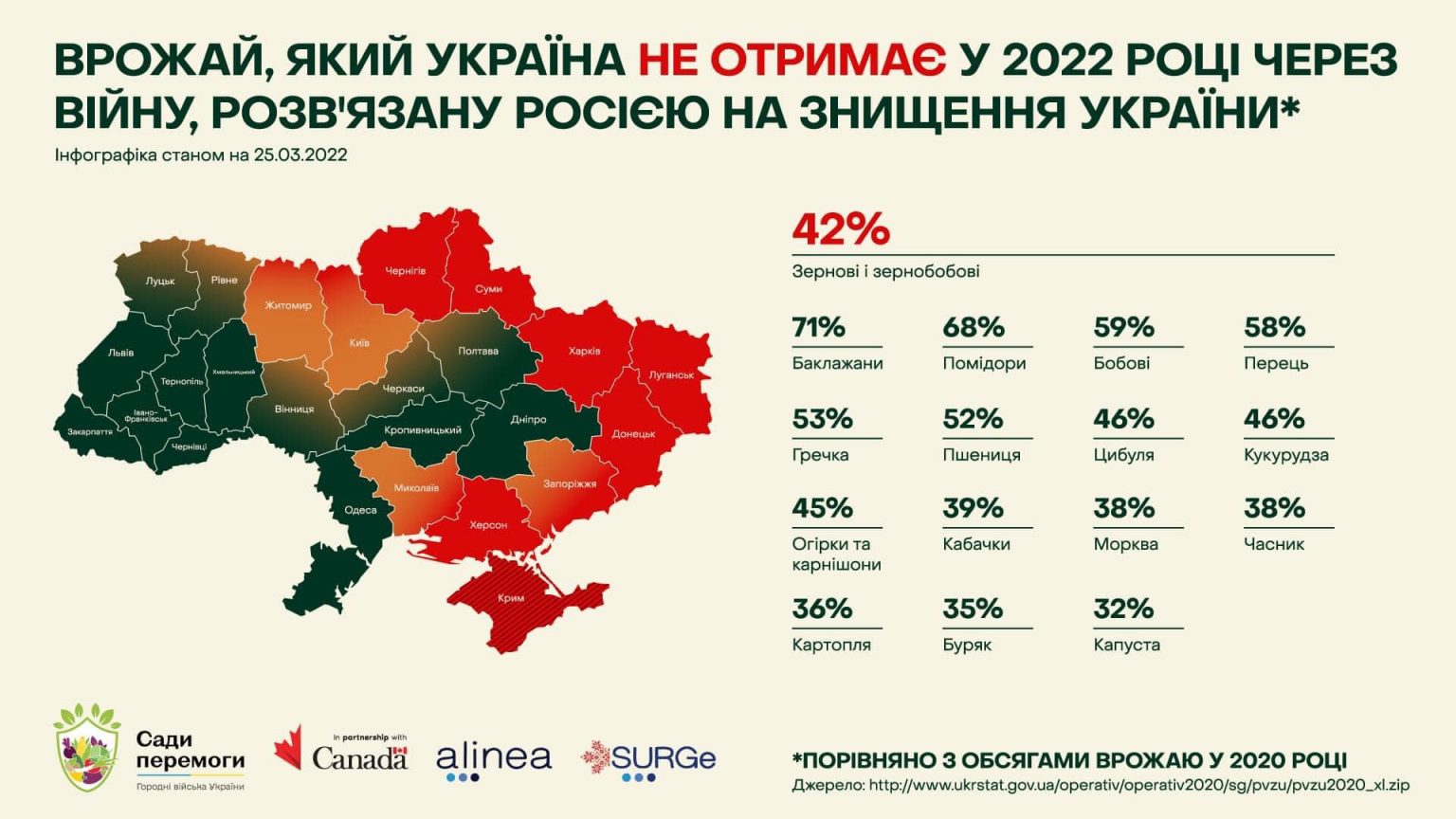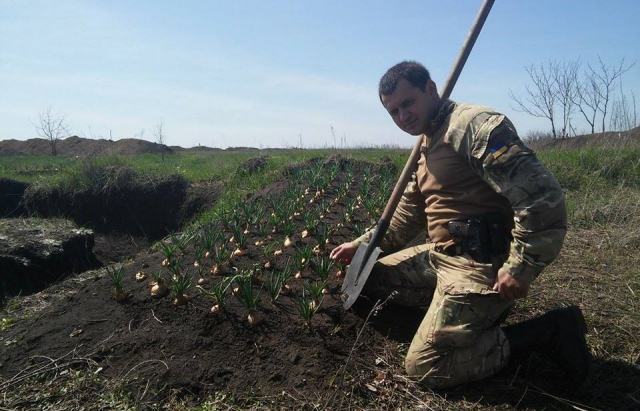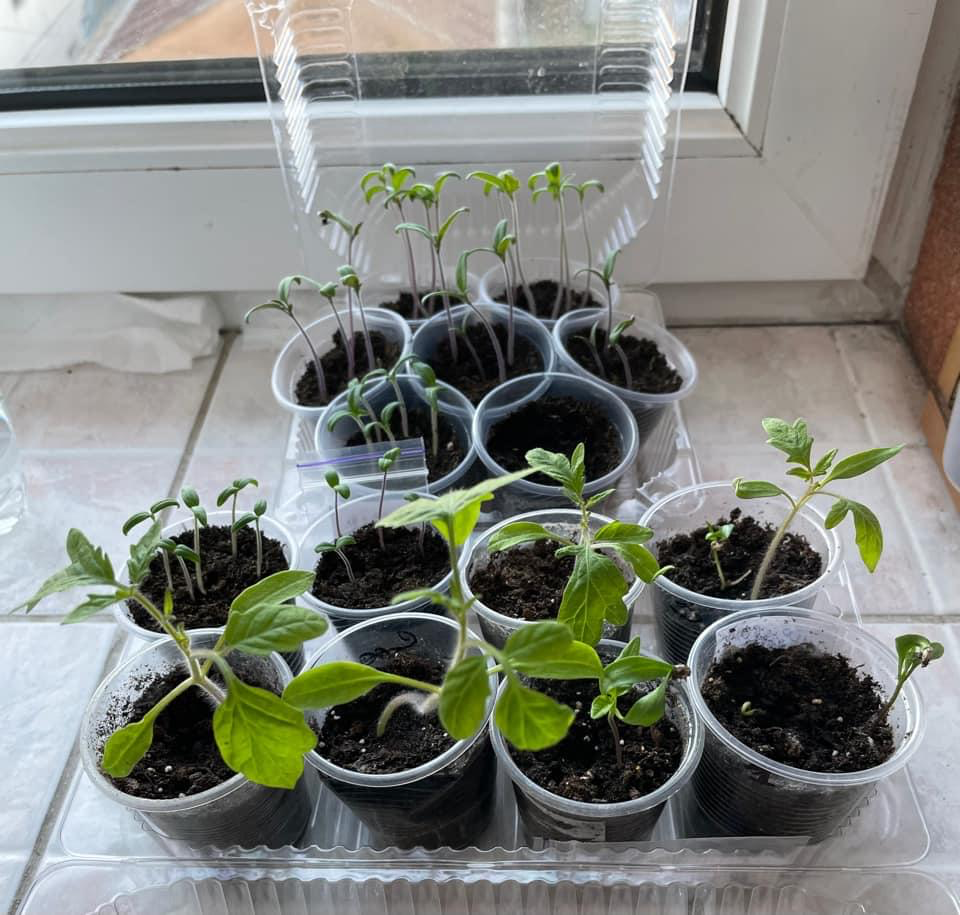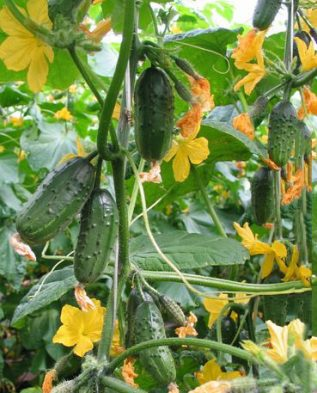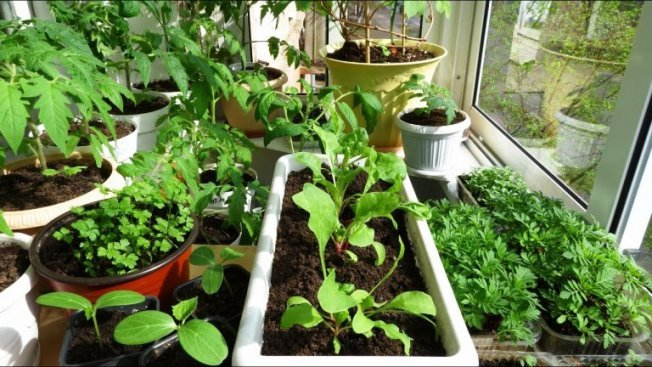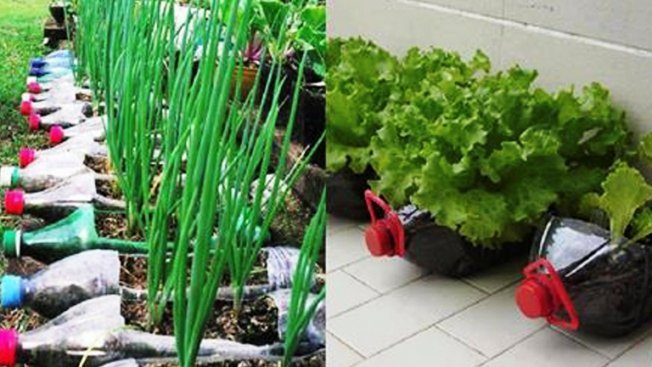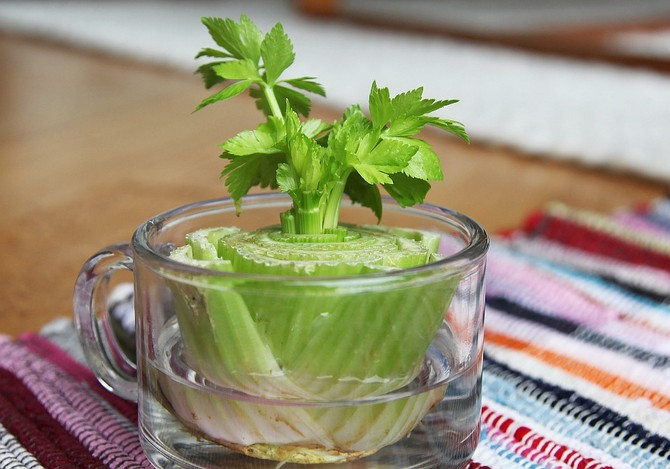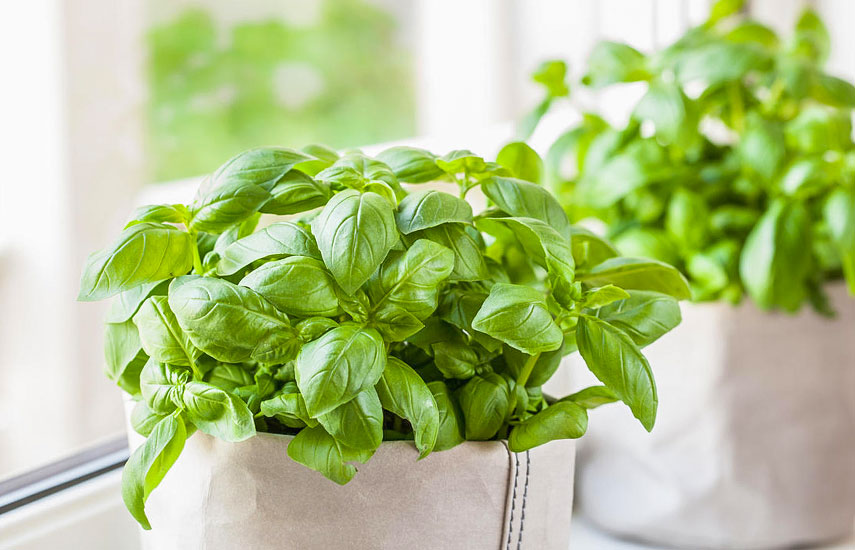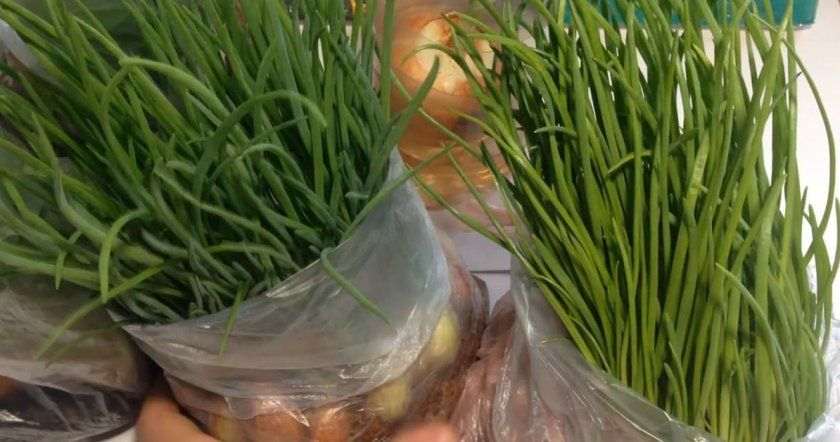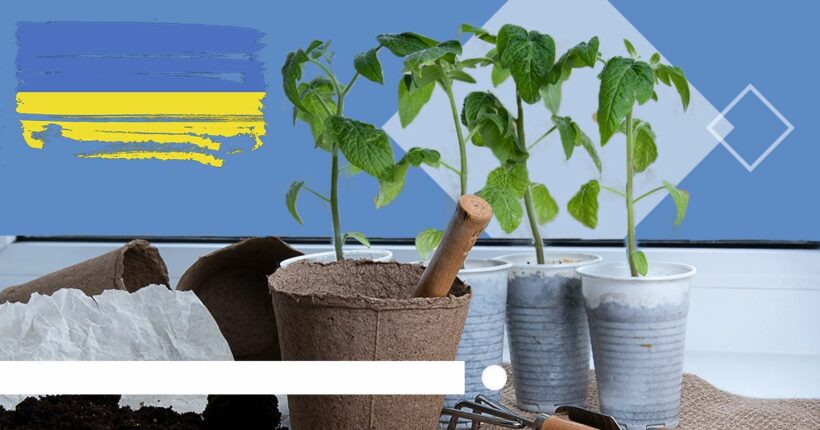
What is the problem?
Because of the war in Ukraine, which was started by russia, one-third of Ukrainians may have problems getting enough food. According to the UN, one in five Ukrainians started cutting back on food after the beginning of a full-scale war.
The Ukrainian Government assures us that Ukraine has formed a strategic food reserve for several years, so we will not remain hungry. In regions that did not have hostilities, agrarians start farmwork. However, it has already been calculated that in comparison with the 2020 harvest, Ukraine will not receive about 40 percent of the harvest of various vegetable and green crops.
What is the solution?
Without normal nutrition, it is difficult to fight the enemy, and the consequences of military aggression. But there is good news: everyone can provide their family with vitamins. Recently, the implementation of the Ukrainian nationwide initiative Gardens of Victory has been initiated in our country. It is aimed at the efficient use of every piece of land for food production.
The initiators of the project called on businesses and international partners to help Ukrainians with seeds, fertilizers, advanced technologies of cultivation, fuel, and equipment for land processing, equipment for processing and storage of products. Every Ukrainian community is able to mobilize efforts and use all available land resources for food production: the wastelands, parks and glades, and the backyards. Every Ukrainian man and woman can plant the Garden of Victory in their household, on the balcony, or near the house.
How does it work?
The Gardens of Victory is the response of Ukrainians to occupiers for the threat of hunger and an attempt to destroy Ukraine. This is about the self-employment of hundreds of thousands of people, the disjunction from the psychological pressure of war, and the provision of food products for both the entire country and your family.
How to join the garden army? Edible crops can be planted in the city gardens, on the flower beds near multi-apartment buildings, and on your own balconies. Even the smallest home garden will be our joint contribution to the victory of Ukraine!
Will it work for sure?
The Gardens of Victory is an idea that has been tested. Such vegetable, fruit, and herbal gardens were planted in private gardens and public parks in the USA, Great Britain, Canada, Australia, and Germany during the First and Second World Wars. They helped the countries to resist the most difficult times.
To build your own garden on the balcony or on the window is not a problem, even in evacuation. If you are a resident of the metropolis and have previously seen the fields only through the car window, you will still manage to do it. For example, our soldiers have been managing to grow vegetables even in the trenches.
Yes, it's impossible to grow the potatoes in the apartment, but there are many crops that can be well developed and give a good harvest even in very small pots and containers with the soil.
1. Decide what you want to grow
The big plus of a windowsill and balcony garden is that you can try to plant quite a lot of garden crops. Basil, mint, green onion, watercress salad, and mustard (like microgreen) grow well. Cherry tomatoes, cucumbers, radish, spicy and sweet pepper are easier to grow at home considering vegetables. The legumes, peas or beans, also do not need much soil.
It is not very convenient to grow the roots on the windowsill (for quite an understandable reason, they need a lot of soil), but if you want your own carrots – there are special round and "baby" species. You can safely plant beets as well; their leaves can be used for a salad.
2. Find the appropriate seeds or starters
Seeds should not be expired (see the expiration date on the package). Pay attention to the size of the plants (they should also be indicated on the package) — for example, tomatoes should be low-growth, slightly more than 50 cm. There are ampule species of cherry tomatoes, which should be placed in suspended flower pots.
The species should better be parthenocarpic (which fructify without pollination) or self-pollinating – then you will not have to be a bee, pollinating flowers.
The following hybrids are recommended for growing the cucumbers on the balcony: city cucumber F1, Colibri F1, Balcony F1, Balcony wonder F1.
It is recommended to soak seeds one day before sowing them. If it is already processed (with a covering), it should not be soaked. A wide range of seeds can be planted at once in a large container for continuous growth. Or in a disembarkation way in glasses. In this case, the starters can be raised in the room, on the window on a sunny windowsill, and then should be put in a large container. The transplantation should be done when there are two pairs of real leaves.
3. Prepare the place and the instruments
Consider where you are going to put your plants — free up a window or a place on the balcony. Clean the windows — the dust keeps a lot of light needed for the plants.
When choosing containers, flower pots and pots, plastic canisters, cups, bottles, old bowls, and bowls can be used. Salad or dill can grow in a normal pot for medium-sized flowers, and it is recommended to choose a capacity from 3 to 5 liters for a bush of tomatoes or cucumbers.
The main thing is to make reservoir holes in the bottom for drainage so that plants are not affected by the stagnation of water after watering. A drain layer must be placed at the bottom. Crushed stone, ceramic or foam-plastic pieces will suit. A very economical option could be a garden on the balcony in plastic bottles. Designated holes should be cut in the walls of the bottles in advance: large – for planting, small – on the side that will be the bottom, for drainage of excess water.
A grid or stretched balls are needed for cucumbers and beans so that plants can curl up on them.
If you are going to grow a garden, do not necessarily look for special glasses or mini-greenhouses. It can be covered with plastic bottles, which allows for maintaining humidity. It is important not to forget to regularly ventilate the garden.
4. Follow the simplest rules of farming techniques
There are lots of different rules and tricks for growing plants, but the basic ones can be enough in extreme conditions.
- If you grow the starters on your own, the general rule during planting is that the bigger the seeds of the plant are, the deeper they have to be planted in the soil. Do not make the planting too thick; if too many seeds have risen, remove the excess seeds.
- Do not forget to water the plants, but also do not allow heavy overwatering. If your plant has wilted but is not yet completely lost, try to pour it a little over the day several times; it is quite possible that it is still developing.
- Do not be afraid of the "chemicals"; it is the same food for plants as plants for people. The appropriate complex fertilizer is the best option for vegetable crops.
- Do not forget to look at your plants; they may have pests and fungal diseases. Keep in mind that you cannot use use chemicals in the conditions of an apartment or balcony, read the instructions for the products. Phytosporin can be used as a relatively safe drug for the treatment and prevention of fungal diseases. Phytoterm suits for fighting against pests. Folk remedies can suit to fight some pests and diseases.
5. Explore innovative ways of growing
If you bought cherry celery in a shop or market, do not hurry to throw out its unedible part. You can grow the celery again with it, at home.
In order to do it, you should cut a part of the bunch of celery near the root and drop it into a container with water. The water should only cover half of this cut-off base of the beam. The plant should be placed in a well-lit place.
Everything that has to be done in the future is pouring the plant with water in time. It will take only a few days, and the first few green starters will appear. About a week later, not only young green branches will rise noticeably, but also the root system will begin to form. In this form, the celery can grow further in water, and you can transplant it into a pot. Both the water and the soil are good for the plant.
Herbs are often sold in the vegetable departments of food stores; there are bushes in pots, which can be transplanted into the soil in a larger pot. In this way, they will live longer and will give a much larger harvest.
Spring onions can be grown even without soil. For example, in a package.
To do this, soak the onions in warm water for 2 days before planting. You should change the water every 12 hours. Then dry the onion with a cloth and put the onions in the bag, close to each other. Before that, pour a layer of common cattail on the bottom of the package. Its thickness should be not less than 2 cm. After inflating the bag, it must be tied with a rubber band or a thread, so that the air does not get out. It is a very important way to apply dense packages without defects when growing onions in this.
You can either immediately put the inflated package with onions on the window in a light place, or keep it in a dark and preferably not very warm place for the first few days. In any case, do not open the package. This can only be done when the starters of the onions are getting to the top of the package.
More useful solutions!
Let's do it! Try to become a "home agronomist" yourself and encourage your friends to grow vegetables on the beds, balconies, and surrounding areas. Our task is to provide food not only to our families but also to bring moral support to Ukrainians who are in the temporarily occupied territories, to forced migrants, and to all those who defend us today.
Take your experience and success and join the all-Ukrainian flashmob Gardens of Victory.
How to get involved?
- Shoot a short video (up to 1 minute) or take a picture of you planting or growing your Garden of Victory in the yard, in the flowerbed, in the village, in the city, on the balcony, and even on the window.
- Describe how you can grow your own harvest of Victory at home and what you plan to do with it (cook delicious salads, can tomatoes, etc.).
- Invite friends and acquaintances to join the flashmob and tag them in a note.
- Use campaign hashtags so that as many people as possible can learn about your experience #VictoryGardensUA #СадиПеремоги #ГородніВійська #СадиДляПеремоги
Let's unite! Ukrainians, the victory will be ours! 🌱🇺🇦


